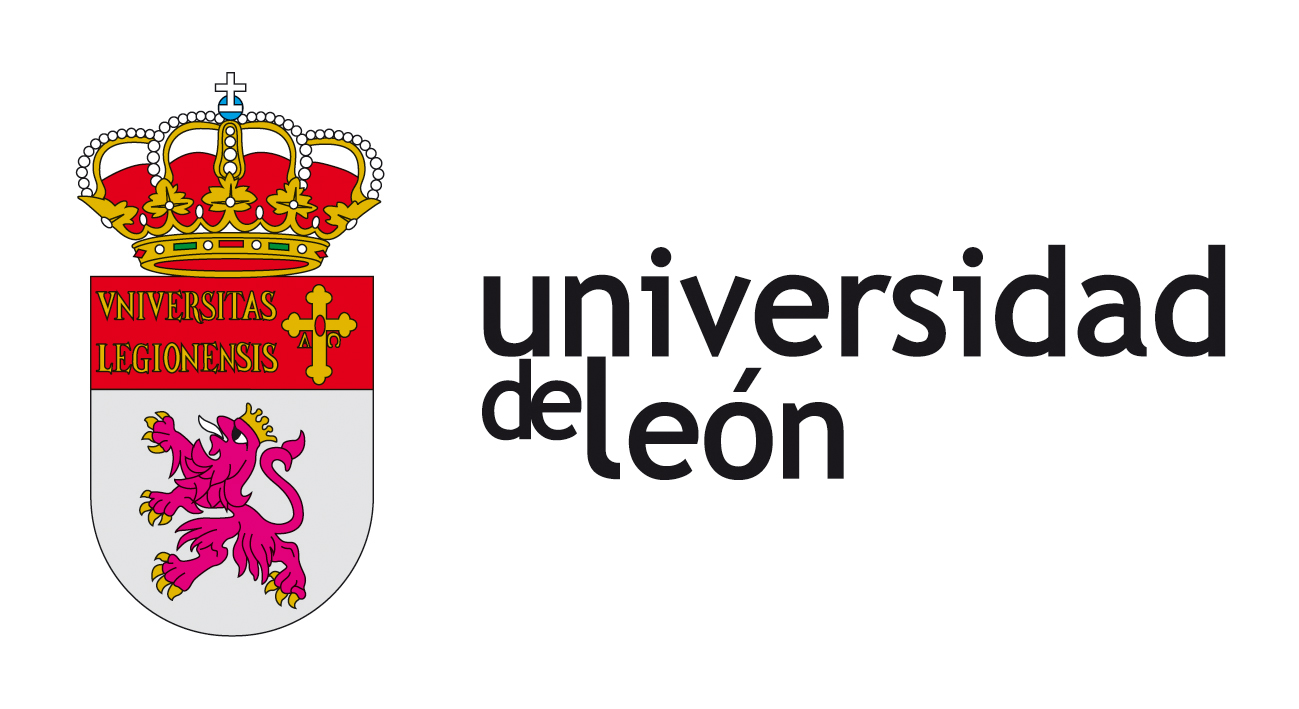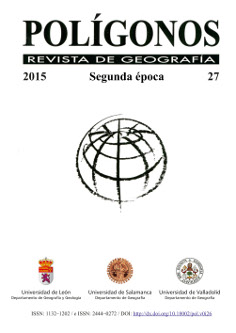Mapas digitales y sociedad: geosemántica social, el poder del sentido de lugar = Digital maps and society: social geosemantic, the sense of place power abstract
DOI:
https://doi.org/10.18002/pol.v0i27.3276Keywords:
Geosemántica social, Neogeografía, Mapas digitales, Redes sociales, Web semántica, Georreferenciación, Social Geosemantic, Neogeography, Digital Maps, Social Networks, Semantic Web, GeoreferenceAbstract
Este texto presenta el enfoque denominado geosemántica social, su marco teórico conceptual, su investigación y su aplicación como tecnología social. Realizaremos una exposición en el nivel de resultados del proceso de concepción, estudio y desarrollos de aplicación de esta propuesta disciplinaria que cruza lo geográfico con lo societal. El concepto surge hace una década, a partir de un enfoque de autor sobre el fenómeno emergente de los mapas digitales, en cruce con el poder de las redes sociales y de la funcionalidad sustantiva de anotar sobre ellos; comunicando y socializando lugares. Se expone un tipo de sociología del territorio, que estudia la forma en la que individuos, comunidades y organizaciones, disponen de nuevos recursos tecnológicos, que permiten anotar en mapas (georreferenciación) y con ello generar significaciones e identidades para los lugares y territorios. Nuestro objeto es conocer los recursos sociales de anotación, comunicación, validación de lugares y su despliegue mediante mapas; desde donde se generan fenómenos relevantes para la transformación tecno-societal en curso, considerando desde sus aspectos lúdicos y expresivos, así como contingentes y estratégicos, alcanzando el concepto de geopolítica (y también micro-geopolítica). Se examina el nivel de familiaridad entre la noción de «neogeografía» y la geosemántica social, realizando un breve análisis de tres plataformas de mapas sociales: Waze, Foursquare y OpenStreetMap. Finalmente se hará repaso evolutivo de tres textos del autor; publicados entre los años 2005 y 2013, que permitirá entregar una definición actualizada del concepto.
This paper presents the standpoint known as Social Geosemantic, its conceptual framework, its research, its development and its application as social technology. We will expose at the level of the results of the design process, and the study and development of this disciplinary proposal that crosses the (neo) Geographical with Societal facts. The concept emerged a decade ago, from an author’s view about the emerging phenomenon of digital maps, along with the power of social networks, plus the substantial functionality that is to annotate on maps; communicating and socializing places. This is a type of sociology of the territory, which studies the way how individuals, communities and organizations have new technological resources that allow them annotating on maps (georeferencing) and thus generate meanings and identities for places and territories. Our purpose is to study the social resources for annotation, communication and validation of places and its deployment using digital maps; from where relevant phenomena are generated that impacts on techno-societal transformation, considering from its playful and expressive aspects as well as contingent and strategic aspects, reaching the concept of geopolitics (and micro-geopolitics). The level of familiarity between the notion of «neogeography» and social geosemantic is put under review, with a brief analysis of three social maps platforms: Waze, Foursquare and OpenStreetMap. Finally we will review - from an evolutionary sidelight – three related texts from this author; published between 2005 and 2013, which will help us to deliver an updated definition of the concept.
Downloads
Métricas alternativas
References
BASULTO GALLEGOS, O. (2012): «Construcción de valor territorial en el imaginario urbano» En: RIPS, Vol. 12, núm. 2, 115-126
BELTRÁN, G. (2014): Geomárketing: Geolocalización, redes sociales y turismo. Publicado por @Gersonbeltran, España.
BENEDETTO, A. (2010): El lugar y la identidad: aportes para El desarrollo local en áreas rurales de la provincia de Mendoza. Estrategias con identidad territorial. Tesis Doctoral, Universidad de Cuyo, Argentina.
BUZAI, G. D. (2001): «Paradigma Geotecnológico, Geografía Global y CiberGeogra-fía, la gran explosión de un universo digital en expansión». En: GeoFocus (Ar-tículos), nº 1, 24-48.
CASTELLS, M. (2001): La galaxia internet. Barcelona, Plaza y Janés.
CERDA SEGUEL, D. (2005): «El mundo según google. Google Earth y la creación del dispositivo geosemántico global». AAInteligencia.cl, Chile. http://www.escaner.cl/escaner86/ensayo.html
https://sites.google.com/site/geosemanticagearth
CERDA SEGUEL, D. (2008): «Tierra, sentido y territorio: la ecuación geosemántica». Escáner Cultural, Chile. http://revista.escaner.cl/node/693
CERDA SEGUEL, D. (2013): «Más allá del sentido de lugar. Geosemántica social, ciencia del territorio». Escáner Cultural, Chile. http://revista.escaner.cl/node/7137
CURRAN, K.; CRUMLISH, J.; FISHER, G. (2012): «OpenStreetMap» En: International Journal of Interactive Communication Systems and Technologies, 2(1), 69-78.
DELEUZE, G. (1969): Lógica del sentido. Paidós, Barcelona, España, 2005 (1969).
DELEUZE, G.; GUATTARI, F. (1993): ¿Qué es la filosofía? Anagrama, Barcelona.
FUSTEL DE COULANGES, N. (1982): La ciudad antigua. Editorial EDAF. Madrid.
GOODCHILD, M. F. (2007): «Citizens as sensors: web 2.0 and the volunteering of geographic information». En: GeoFocus (Editorial), nº 7, p. 8-10, ISSN: 1578-5157. https://www.geofocus.org/index.php/geofocus/article/view/107
GRAHAM, M. (2009) «Neogeography and the palimpsest of place: web 2.0 and the construction of a virtual Earth». Tijdschrift voor Economische en Sociale Geografie, Vol. 101, Nº. 4, 422–436.
HARVEY, F. (2013): «A New Age of Discovery: The Post-GIS Era». Ponencia en: GI_Forum 2013. Creating the GISociety (JEKEL, T., CAR, A., STROBL, J. & GRIESEBNER, G., Eds.). Herbert Wichmann Verlag, VDE VERLAG GMBH, Ber-lin/Offenbach, 272-281
KOSIVA, S.; BAUER, A. M. (2013): «Mapeando el paisaje político: hacia un análisis SIG de las diferencias medioambientales y sociales» En: Cuadernos del Qhapaq Ñan Año 1, N° 2, 120-160.
PFEILSTETTER, R. (2011). «El territorio como sistema autopoiético». Periferia, Revista de recerca i formació en antropología, Universidad Autónoma de Barcelona, n°14, 1-17. http://www.raco.cat/index.php/Periferia/article/download/244163/327010 (consultado el 10/02/2015).
PORTMANN, E. (2012): «The Social Semantic Web» En: The FORA Framework, Fuzzy Management Methods. Springer Science & Business Media, Dec 30, 13-36. Springer-Verlag Berlin Heidelberg. https://doi.org/10.1007/978-3-642-33233-3_2
RAFFESTIN, C. (1980): Por una geografía del poder. El Colegio de Michoacán. Edición en e-book, 2011.
SCHMITT, C. (2013): Teoría del partisano. Trotta Editorial
SCHNEIDER et al. Review of Argumentation for the Social Semantic Web. The Open University, UKA, 2013. 1570-0844/0-1900.
SCHNEIDER, S.; PEYRÉ TARTARUGA, I. G. (2006): «Territorio y enfoque territorial: de las referencias cognitivas a los aportes aplicados al análisis de los procesos sociales rurales» En: Desarrollo Rural. Organizaciones, Instituciones y Territorio. Ed. Ciccus, Buenos Aires.
SCHUTZ, A. (1989): La Construcción significativa del mundo. Paidós, Barcelona.
SUBIRES-MANCERA, Mª P. (2012): «Cartografía participativa y web 2.0: estudio de interrelaciones y análisis de experiencias». En: Revista de Comunicación Vivat Academia, Año XIV, Nº Especial.
TURNER, A. (2006): Introduction to Neogeography. O’Reilly Short Cuts series. O’Reilly Media
VERD, J. M.; PORCEL, S. (2012): «An Application of Qualitative Geographic Information Systems (GIS) in the Field of Urban Sociology Using ATLAS.ti: Uses and Reflections» [48 paragraphs]. En: Forum Qualitative Sozialforschung / Forum: Qualitative Social Research, 13(2), Art. 14.
WEBER, M. (1992): «Sociología de la Dominación». En: Economía y Sociedad. FCE. México.
WINTHER, R. H. (2014): «Mapping Kinds in GIS and Cartography. Natural Kinds and Classification in Scientific Practice». En: Natural Kinds and Classification in Scientific Practice, Chapter: Mapping Kinds in GIS and Cartography. Editors: Catherine Kendig. Publisher: Pickering and Chatto, London, R.U.
ZAPIAIN AIZPURU, Mª T. (2011): «Reflexiones identitarias en el territorio contemporáneo. La construcción colectiva de lugar. Caso de estudio de la Vega de Gra-nada». En: Cuadernos Geográficos, 48 (2011-1), 79-108.
Artículos periodísticos y sitios web:
Artículos de Wikipedia en español e inglés:
Febrero 2012, 201-216.
«Yahoo Inc reportedly in talks to buy location-based app maker Foursquare for US$900 million».
http://es.wikipedia.org/wiki/Prosumidor
http://en.wikipedia.org/wiki/mashup
http://en.wikipedia.org/wiki/Locative_media
http://en.wikipedia.org/wiki/Neogeography
http://es.wikipedia.org/wiki/Noosfera
http://es.wikipedia.org/wiki/territorio
Downloads
Published
How to Cite
Issue
Section
License
Copyright (c) 2015 Diego Cerda Seguel

This work is licensed under a Creative Commons Attribution-NonCommercial-ShareAlike 4.0 International License.
Los autores que publican en esta revista están de acuerdo con los siguientes términos:
- Los autores ceden de forma no exclusiva los derechos de explotación (reproducción, distribución, comunicación pública, transformación) a las Universidades de León, Salamanca y Valladolid, que lo pondrán a disposición pública en la página web de la revista (http://revpubli.unileon.es/ojs/index.php/poligonos/index) y en el repositorio propio Bulería (https://buleria.unileon.es/handle/10612/374)
- Los autores pueden establecer, por separado, acuerdos adicionales para la distribución no exclusiva de la versión de la obra publicada en la revista (por ejemplo, alojarlo en un repositorio institucional o publicarlo en un libro), comunicándolo al Equipo Editorial y con un reconocimiento explícito de su publicación inicial en Polígonos. Revista de Geografía.
- Este trabajo se encuentra bajo la Creative Commons Attribution-NonCommercial-ShareAlike 4.0 International License. Puede consultarse desde aquí la versión informativa y el texto legal de la licencia.
- Los autores se compromentes a aceptar las sugerencias de los Evaluadores externos o del Equipo Editorial. En caso de discrepancia con las mismas, los autores deben justificar debidamente su propuesta.
- Se permite y se anima a los autores a difundir electrónicamente las versiones post-print (versión evaluada y aceptada para su publicación) de sus obras, ya que favorece su circulación y difusión y con ello un posible aumento en su citación y alcance entre la comunidad académica.









